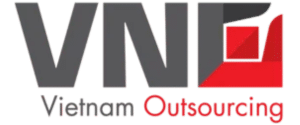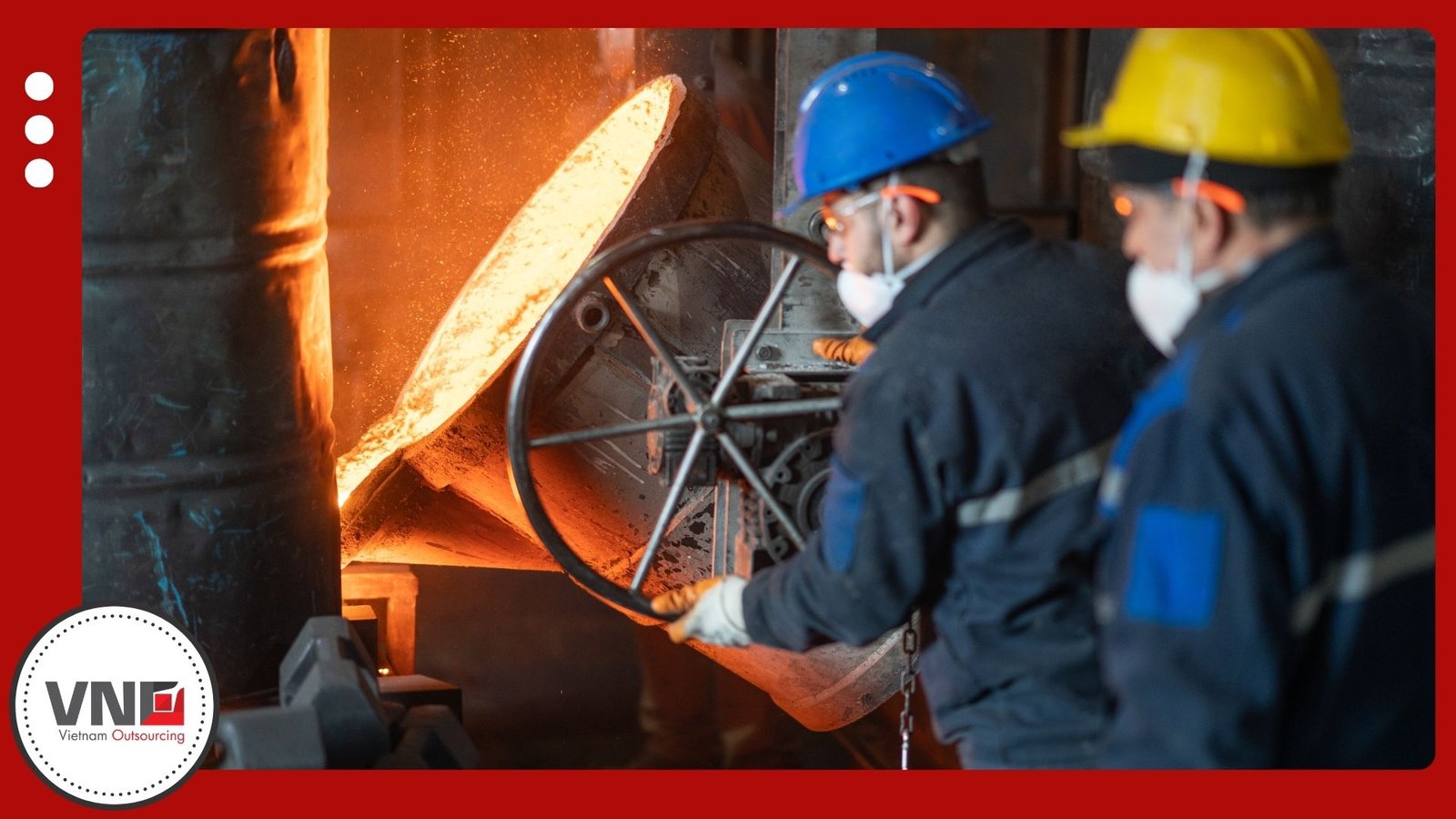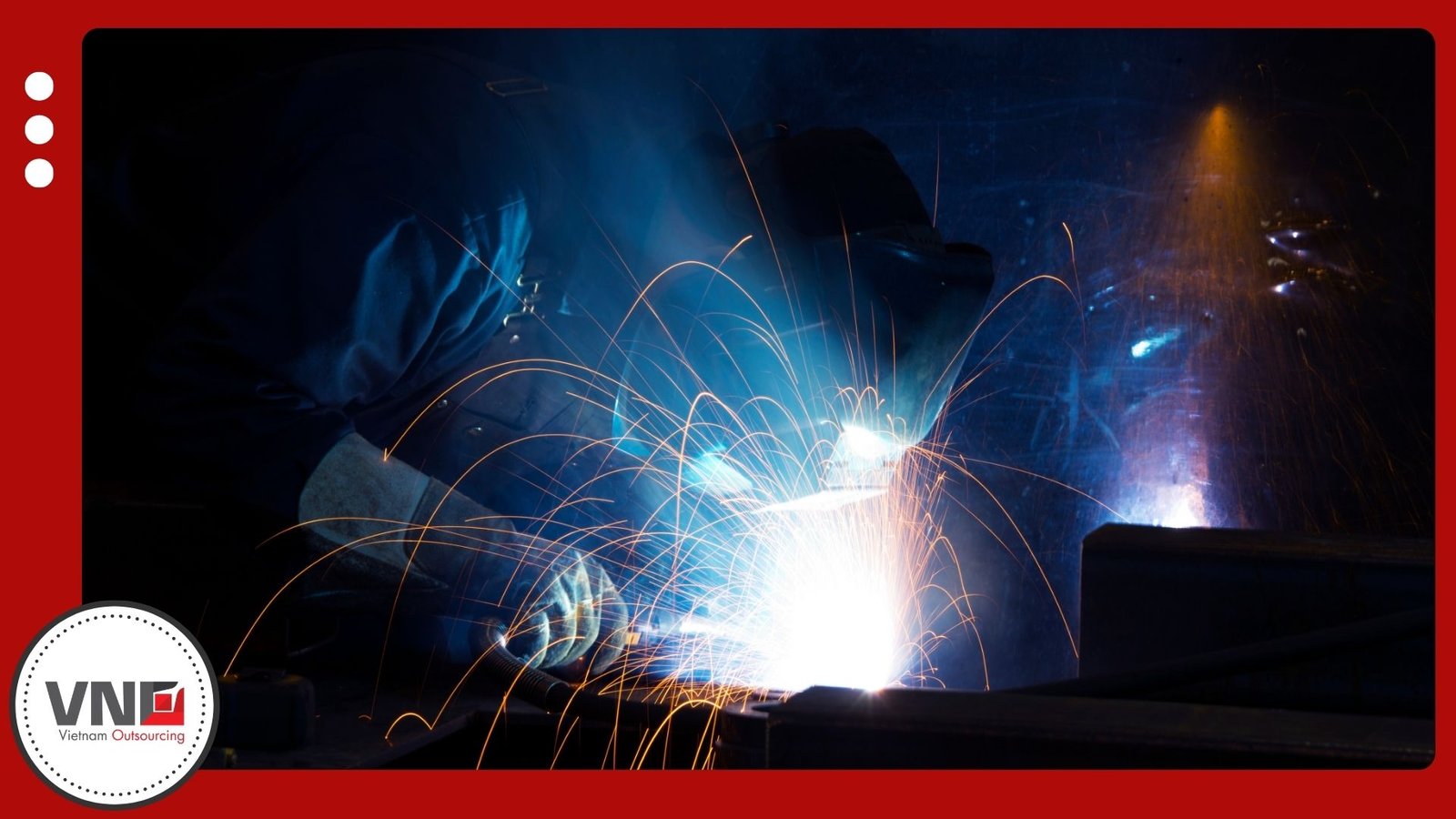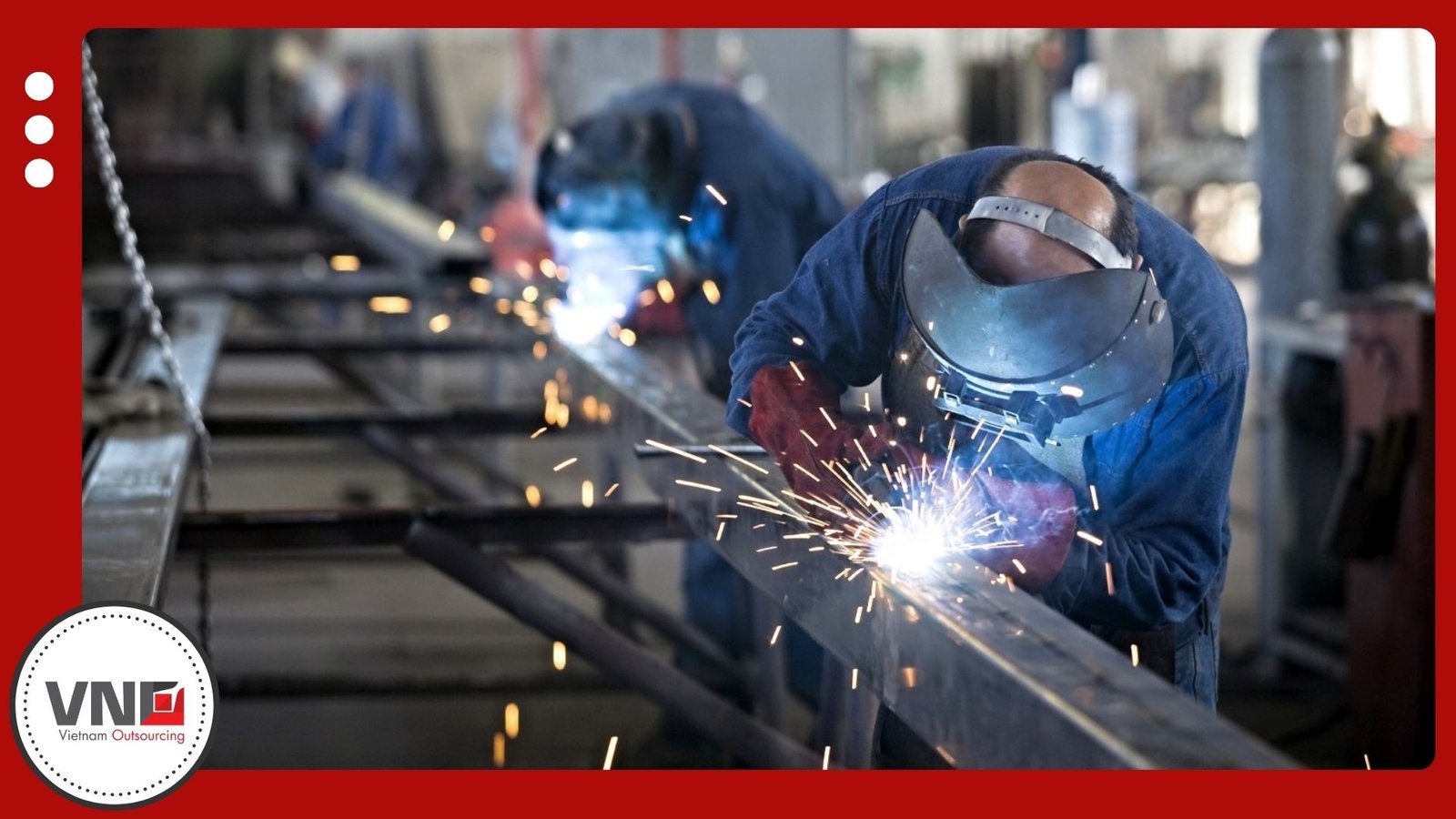Introduction
The metal casting industry plays a central role in modern manufacturing. At its core, casting is the process of pouring liquid material into a mold, allowing it to solidify, and producing a part shaped like the mold cavity. Although casting can use ceramics, plastics, or concrete, metallic materials dominate the industry. You can read casting material in Vietnam for more insight. From automotive engines to machine frames, castings form the backbone of countless industries.
What Is the Casting Industry?
The casting industry is one of the oldest and most important technologies in human history. Today, it is divided into two main categories:
Conventional casting (sand molding) – the most widely used, flexible, and cost-effective method.
Special casting (metal mold or precision casting) – suitable for high accuracy, complex shapes, and demanding applications.
These two methods cover everything from simple mechanical components to aerospace-grade parts.
Applications of the Casting Industry
Casting has become indispensable in modern industry because it produces parts at scale and at a lower cost. On average, castings account for 40–80% of the total weight of mechanical equipment. In some machinery, casting weight reaches 90%, yet casting cost usually represents only 20–25% of the total machine cost.
Applications include:
Automotive engines, gearboxes, and housings
Aerospace components such as turbine blades and structural parts
Construction equipment frames and heavy machinery
Agricultural tools and irrigation systems
Energy equipment, including wind turbine hubs and pump housings
Because of its versatility, the casting industry supports nearly every sector of the global economy.
Advantages of the Casting Industry
Casting remains a dominant process due to its many strengths:
Material Flexibility – Castings can be made from steel, iron, aluminum, copper, magnesium, and more. Sizes range from a few grams to hundreds of tons.
Complex Shapes – The process enables intricate structures such as engine blocks, pump casings, and coal machine shells, which are difficult or impossible to fabricate by machining.
Dimensional Accuracy – Special casting methods achieve high precision in size, shape, and surface finish.
Layered Casting – Multiple metal layers can be combined into one part, improving durability and performance.
Low Production Costs – Casting requires smaller investments compared to forging or machining, offers flexible production scales, and delivers relatively high productivity.
Disadvantages of the Casting Industry
Despite its benefits, the casting process also comes with challenges:
Lower Accuracy in Conventional Casting – Sand casting, for example, may produce parts with less surface smoothness and dimensional precision.
Defects – Porosity, shrinkage, cracks, or gas pitting can occur during solidification. Detecting and fixing these defects requires advanced and often costly equipment.
Energy Intensive – Melting metals consumes large amounts of energy, contributing to higher environmental impact unless modern, efficient methods are used.
Evolution of the Metal Casting Industry
Casting has been around for thousands of years. Ancient civilizations used bronze and iron casting for tools, weapons, and art. The industrial revolution accelerated its use with large-scale foundries producing machine parts.
In the 20th century, internal combustion engines and heavy machinery created massive demand for iron and steel castings. Today, advanced casting integrates automation, 3D printing, simulation software, and robotic pouring systems. These innovations reduce defects, improve consistency, and lower costs.
The Role of Modern Casting Technologies
Recent decades have seen rapid improvements in casting:
High-Pressure Die Casting – Ideal for aluminum and magnesium, producing lightweight and precise parts for automotive and aerospace.
Investment Casting – Produces complex, thin-walled shapes with excellent accuracy.
Vacuum Casting – Used for titanium and other reactive metals, ensuring defect-free components.
Green Sand & Resin-Bonded Casting – Remain popular due to low costs and flexibility for various alloys.
These technologies help the casting industry meet rising global demand while addressing stricter quality and sustainability requirements.
Global Casting Industry Trends
The global casting market continues to expand, fueled by:
Automotive Lightweighting – Aluminum and magnesium castings replace steel to reduce vehicle weight and emissions.
Renewable Energy Growth – Wind turbines, solar panel frames, and hydropower equipment all require large castings.
Infrastructure Expansion – Developing economies are driving demand for construction and industrial machinery.
Industry 4.0 Adoption – Simulation software, real-time monitoring, and predictive analytics optimize casting production.
China remains the largest casting producer, followed by India, the US, and Germany. However, Vietnam is emerging as a competitive player thanks to lower costs, improved quality, and growing technical capabilities.
Casting Industry in Vietnam
Vietnam’s casting industry has grown steadily over the past decade. With competitive labor costs and government support, the country has attracted foreign buyers seeking reliable alternatives to China and India. Vietnamese foundries now export iron, steel, and aluminum castings for automotive, construction, and energy industries.
Moreover, partnerships with outsourcing experts like Vietnam Outsourcing (VNO) make it easier for international companies to identify qualified Vietnam die casting supplier, ensure quality inspections, and streamline logistics. This combination of cost efficiency and compliance with international standards positions Vietnam as a rising star in global casting.
Future Outlook
The casting industry will remain essential in manufacturing. Future innovations will focus on:
Reducing defects with AI-driven quality control
Expanding eco-friendly technologies to cut emissions
Integrating 3D printing for mold and prototype creation
Developing new alloys for electric vehicles and aerospace
With global demand growing, casting will continue to shape industries for decades to come.







